Part Heaven, Part Hell: The Mexican Poems of Malcolm Lowry
|
|
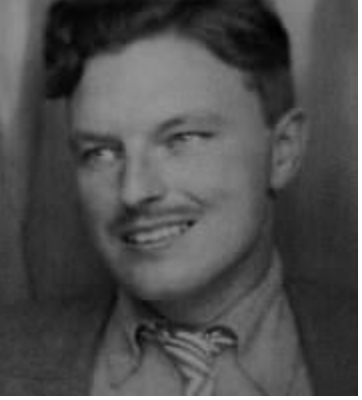
Malcolm Lowry
*
Español
June 16, 2024
by Philip Gambone
Malcolm Lowry, most noted for his modernist masterpiece Under the Volcano, was a prodigious writer. From his pen, the man whom The Times of London once pronounced "a genius," poured out stories, novellas, novels, plays, journals, letters, and film scripts. "His talk and his writing were endless and autistic in their compulsion and terror," observed his friend and admirer Earle Birney, "but they carried an eloquence such as no other artist has ever shaped for such experience."
Lowry once said of Under the Volcano that it could be read "an indefinite number of times and still not have yielded all its meanings or its drama or its poetry." Indeed, poetry—the poetry of his prose and that of his verse—was in Lowry's blood. As a schoolboy, he was already writing lyrics, "full of extraordinary imagery, but very beautiful," his chum Ronnie Hill once recalled.

Spanish edition of Under the Volcano
*
When he was 17, Lowry shipped off to sea. "No silk-cushion youth for me," he told a reporter covering the event. "I want to see the world, and rub shoulders with its oddities." It would prove to be a prophetic declaration. The world's "oddities" infused his writing, but also triggered the demons—guilt, loneliness, fear, a pervasive sense of doom—that plagued him his entire life.
In 1929, as a 20-year-old student at Cambridge University, Lowry published his first poem in one of university's literary magazines. In that poem, inspired by his time at sea, two Norwegian sailors witness both the nightmarish dangers of the sea and "lands of strange beauty / Where broad leaves struggle against the sun." Another seven years elapsed before Lowry and his first wife Jan settled in their own land of broad leaves and sunlight, but that land, Mexico, was already in his imagination.
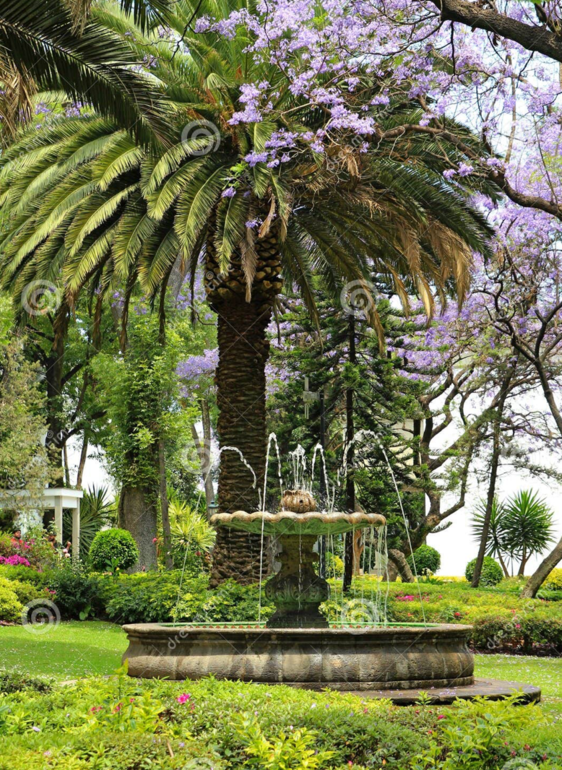
"lands of strange beauty Where broad leaves struggle against the sun."
*
"Never in my whole life have I been to a place so fantastically beautiful as this," Lowry said of Mexico when he arrived in 1936. "The people are lovely, gentle, polite, passionate, profound and true." Like two other English writers inspired by Mexico—D. H. Lawrence and Graham Greene—Lowry came to Mexico "seeking surcease from a prevailing malaise which doubted the values of Western Civilization," writes literary critic Douglas Veitch. The country also became the locale where Lowry's deepening awareness of the tragic dimension of human existence brought him excruciating torment.
Over the course of his brilliant, tortured, drunken life, Lowry wrote several hundred poems, though few were published in his lifetime. After his death, City Lights Books brought out a collection, edited by Earle Birney, that amounted to about a quarter of all the poems Lowry had written. Two sections of that anthology—"Thunder Beyond Popocatepetl" and "The Cantinas"—gathered together 14 of Lowry's Mexican poems, many of which were written in the same period when he was working on Under the Volcano.
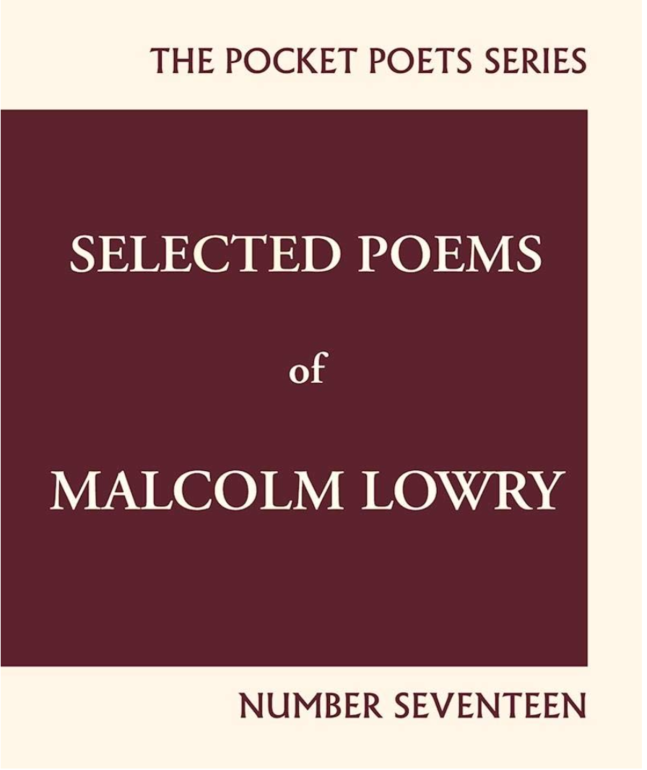
City Lights edition (1962) of Lowry's poems
*
In 1939, his impending divorce from Jan sent Lowry on a four-day binge. His poem "Delirium in Vera Cruz" was most likely inspired by that experience. It describes a drunken poet who is alone in the hotel bedroom where he once experienced tenderness. In that room, now strewn with "tequila, stubs, dirty collars, / Sodium perborate, and a scrawled page / To the dead," the poet smashes all the glass he can find.
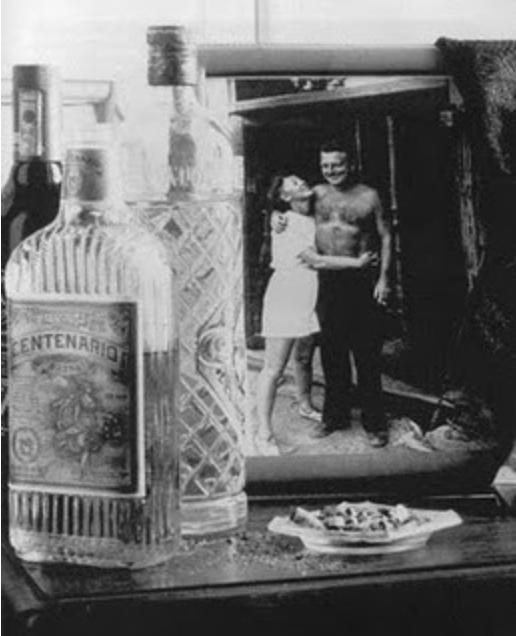
Lowry and wife
*
The detritus of drunkenness—desolate bars, upturned glasses, empty bottles, the shakes, a breakfast of "stale rum, sardines and peas"—litters Lowry's Mexican poems. He examined his own drunkenness with a mixture of remorse, irony, disgust, and hopelessness:
|
|
|
|
The only hope is the next drink.
If you like, you take a walk.
No time to stop and think,
The only hope is the next drink.
| |
|
|
The poems, editor Birney wrote, reveal Lowry's stance, "teetering on a rope, between grandeur and self-pity, between exultation in his own power and agonies of self-contempt. His whole life was a slow drowning in great lonely seas of alcohol and guilt."
Fear permeates the Mexican poems. Ever at his heels was the fear of the "knighted wyvern" (a mythical dragon), his symbol for all that threatens to bring pain, to limit freedom, to pin the heart. "How did all this begin," he asks in a poem entitled "No Company but Fear":
|
|
|
|
and why am I here
at this arc of bar with its cracked brown paint,
papegaai, mezcal, hennessy, cerveza,
two slimed spittoons, no company but fear.
| |
|
|
Lowry looked squarely—one might even say soberly—at fear. The poems detail his hyper-awareness of the "tick of time," of the possibility of madness, of the lurking presence of death.
One of the Mexican poems, "For Under the Volcano," was intended to be inserted into the novel he was working on. In the end, Lowry did not include it, but the poem stands on its own as a lacerating meditation on memories of youthful love and past beauty. The poet, "so far away from home and wife," and feeling nothing but "emptiness now in my soul," can only pray "for my sick life."
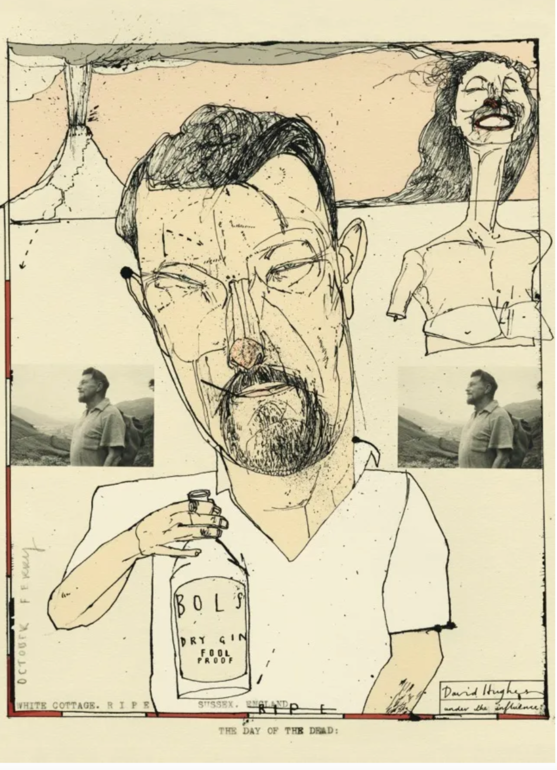
Malcolm Lowry by David Hughes
*
In another poem, "Grim Vinegarroon," Lowry sees himself as a scorpion (vinegarroon) "that stings itself to death beneath the stone / Where no message is, on the mescal plain." His self-loathing is relieved by the thought of "three good things I had done": giving his last two shillings to a tramp; putting an injured scorpion out of its suffering; and offering hope to "a weeping child whose misery was mine."
|
|
|
|
So did but save myself, if not for long.
These three against a lifetime of wrong.
| |
|
|
Raised in the Anglican Church, Lowry never completely lost his faith. The way of compassion and self-abnegation, however imperfect, remained for him the way to salvation. The poem ends: "No other solution save the cross!"
Two other poems—"Death of a Oaxaquenian" and "In a Mexican Church"—also touch upon the theme of faith. In the first, the poet, alone in "the wild cactus plain," feels God's vast despair at man's savagery, vanity, and indifference. In the second, Lowry contemplates a wooden statue of Christ, "slashed with an axe."
|
|
|
|
How shall we pray to you all pied with blood,
Yet deader by far than the hacked wood?
But pray we must since prayer is all our search
Who come in anger only to beseech.
| |
|
|
Another Christian figure, Saint Luke, appears in one of Lowry's most ambitious and technically adroit poems, "Sestina in a Cantina." Set in a waterfront tavern in Veracruz, the poem centers on a character called Legion, who sees himself "as all mankind in prison / … / Babbling of love while at his back rise horrors." The saint, who is also a doctor, chides Legion for cultivating these horrors.
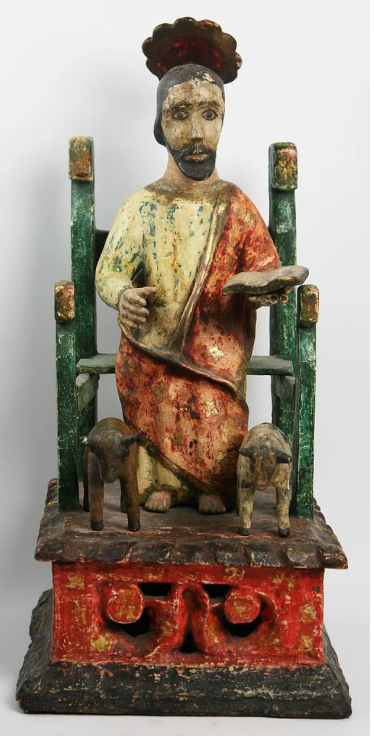
St. Luke the Evangelist Bulto (Mexico, c. 1860s)
*
One evening, when Lowry read "Sestina" to a creative writing class, he got so drunk that he had to be carried home, his host calling out to him, "Come down from your cross, Malc!" Self-pity may have imbued much of Lowry's poetry, but a determination to achieve self-knowledge is also always present and rescues these poems from being mere exercises in self-pity.
Harvey Breit, the editor of Lowry's letters, once wrote, "Though Lowry knew Heaven, he knew Hell best. Though he knew hope, he knew despair better." While despair often tormented Lowry, his potent, restless imagination and his deep intelligence allowed him to experience life in a more complex, multidimensional way.
In a 1950 essay, he wrote: "The person who falls in love with Mexico falls in love with a colorful and proud and present entity … but he is also involved, in the deepest sense, with a mystery." That mystery, part Heaven, part Hell—"tragic and comic at once," as he himself put it—beckoned Lowry to explore, unflinchingly, "the hidden life of man," however painful that discovery might prove to be.
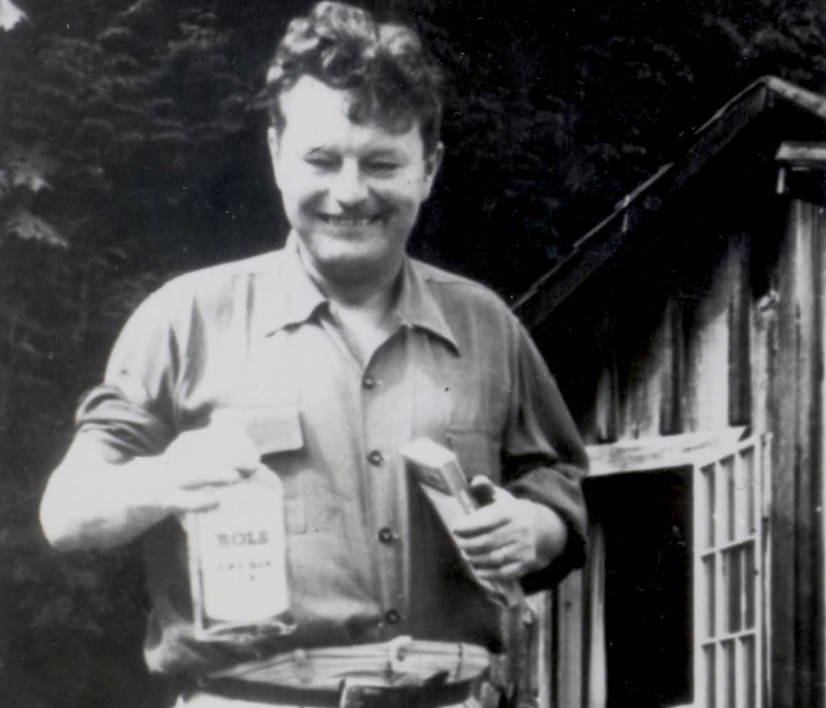
Malcolm Lowry
*
**************

Philip Gambone, a retired high school English teacher, also taught creative and expository writing at Harvard for twenty-eight years. He is the author of five books, most recently As Far As I Can Tell: Finding My Father in World War II, which was named one of the Best Books of 2020 by the Boston Globe. It is available through Amazon, at the Biblioteca bookshop, and at Aurora Books off the Calzada de la Aurora.
**************
*****
Please contribute to Lokkal,
SMA's online collective:
 ***
***
Discover Lokkal:
Watch the two-minute video below.
Then, just below that, scroll down SMA's Community Wall.
Mission

Visit SMA's Social Network
Contact / Contactar

|
|
|
|
| | |
Click ads
Contact / Contactar
 copyright 2025
copyright 2025
|
